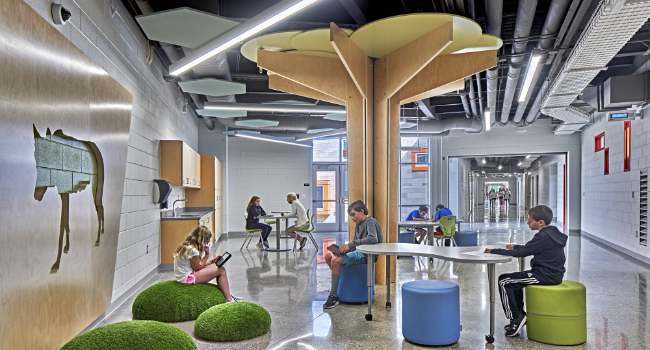
Making Safety and Security Intrinsic to School Design
Public anxieties about school safety are escalating across the country. According to a 2023 Gallup report, 44% of parents fear for their child’s physical safety at school, a 10 percentage-point increase since 2019. Unfortunately, these fears are likely to increase if the incidence of school tragedies continues to mount. As a result, school leaders are now charged with two non-negotiable responsibilities. The first, as always, is to ensure kids have what they need to learn, grow, and thrive. Sadly, their second responsibility is to keep the children in their care safe from threats and physical danger.
This is why many school leaders are taking the issues around secure school design far more seriously today than they might have in the past. Our own work — we’re a secure environments expert and an educational architect — has thrown a clear spotlight on this new focus. Here are six important points to consider at the pivot point of school design and security.
Security starts with assessment.
Any plan to integrate stronger security measures into a school should begin with a thorough site assessment. This entails having a security consultant visit the school to evaluate any vulnerabilities it may have in physical security and emergency preparedness. The site assessment should provide a 360-degree examination of the school, its practical functions, and its surroundings. It should include a review of current safety policies and procedures, and onsite interviews with key staff and leadership. This thorough examination of internal and external design features will identify any technical and physical gaps in security.
Security occurs in layers.
Experts agree that the best physical design practices to impede active threats include delaying access to the most occupied portions of the building. Incorporating layers of security includes creating a secure entrance, then limiting access to classroom wings or pods, followed by securing the individual learning spaces. Following these steps is the most effective approach to increasing safety and security in school facilities.
Avoid focusing solely on active violent threats.
While active-shooter events are a very real threat, they are still a rare occurrence. Instead, it is best to use a multi-hazard approach to guide safety and security enhancements. Consider other threats such as fire and medical emergencies and leverage alert systems, technology, door locks and identification, and staff training to enhance responses.
Security enhancements do not need to be expensive.
Effective design measures will customize security improvements to address a school’s biggest risks. For example, an elementary school may focus more efforts on the main entrance and exterior doors to address external threats, while a high school may need to focus on behavioral threat assessments, as risks tend to be internal.
Effective plans and training are essential components for safety and security.
This post was originally published on 3rd party site mentioned in the title of this site




